It is one of the great wonders of the world , of those places that if you can afford it, you must visit at least once in your life.
I’m talking about Petra , the historical enclave of Jordan that I’ve had the chance to visit, and that you’re still surprised by what you can imagine seeing photos of its famous corners, especially the Treasury .
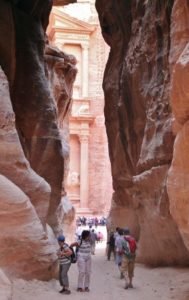
Therefore, next I will tell you 10 curiosities and historical data about Petra.
Petra, why lost city
1.- Petra is known as the lost city because although its history dates back to the time of the Nabateans, in the seventh century BC, in the Middle Ages it was completely abandoned and was not “discovered ” by Westerners until the beginning of the XIX century.
In particular, it was the Swiss explorer Johann Ludwig Burckhardt who in 1812 got the local inhabitants to take him to know that lost city that was spoken of.
Enthusiastic of the Arab culture, before it was converted to the Muslim religion and changed its name to Ibrahim Ibn Abd Allah , which allowed him to gain the necessary confidence to be driven to Petra.
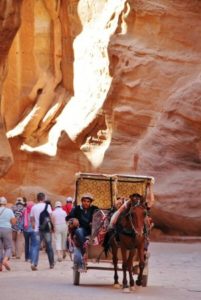
2 .- The main reason that Petra became the lost city is its special location in a valley surrounded by high rocky mountains whose entrance is the deep gorgeknown as the Siq .
With a length of one and a half kilometers, the gorge reaches a minimum width of just over two meters in some of its sections.
For that reason it became a completely hidden and impregnable enclave.
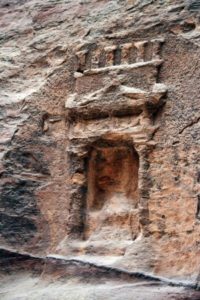
Who are the Nabataeans
3.- Petra reached its maximum development when it was occupied by the Nabataean civilization . But who were the Nabataeans ?
It was an Arab town that reached its maximum splendor between the 4th and 1st centuries BC, which spread through the lands of Palestine, devoting itself to commerce.
It shows this commercial spirit in the sculptural reliefs that you can see in the aforementioned Siq , which represent life-size camel caravans.
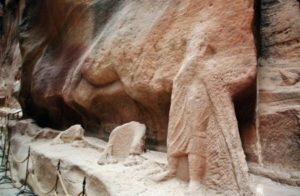
4.- Three were the functions that the city of Petra fulfilled .
On the one hand, it was considered as the city for tomorrow . With a pagan religion with many gods, the city of Petra was full of Nabataean tombs , spaces excavated in the rock where the dead rested.
You will see them very simple, simple hollows of access to a cave, but also splendid, and the most famous of them, the image that you surely have in the retina, known as the Treasure of Petra .
On the other hand, Petra was a defensive enclave where the Nabataeans hid to defend themselves from the attacks of other peoples.
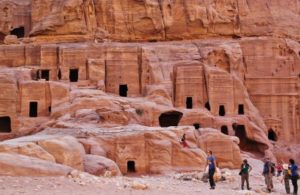
And on the other, Petra was a great commercial city , an essential stage in the caravan routes that traded with products from India.
5.- One of the keys to the Petra boom was the availability of water, always scarce in these lands of the Middle East .
Because of its location between rocky mountains, and thanks to the construction of complex canal networks, Petra had enough water available for its population.
But, on the other hand, the disposition of the great gorge in history favored important floods by torrents of waters.

In the last known, a few decades ago, some tourists died, which caused that some walls were built to contain the arrival of water, which you can see during your tour of the Siq .
Likewise, at the entrance to the Siq you will see a tunnel that also serves to divert the waters.
The Romans in Petra
6.- Petra was conquered by the Romans , in particular, by General Pompeyo in 63 BC, and although initially the nabatos had a certain autonomy, after the death of the last Nabataean king in 106, it became a city controlled by the emperor Trajan .
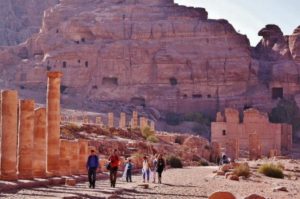
Later it was losing its strength as a commercial city to deviate traditional routes with the emergence of new shipping routes.
Archaeological remains of the Roman presence can now be seen especially in the Way of the Columns and in the Petra Theater .
In the Byzantine era , in the fourth century, Petra joined the Eastern Roman Empire , already under Christianity, which led to the construction of some churches.
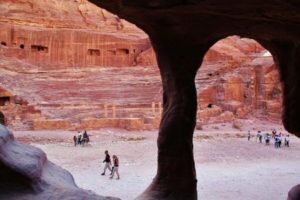
7.- In the year 363 an important earthquake took place , which caused that a good part of the buildings of the city were destroyed.
And since Petra no longer had the commercial importance of that time, we were rebuilt and little by little the city was abandoned.
In the later Middle Ages , there was a time when Petra was occupied by the Crusader knights , until the year 1187 when they were defeated by Saladin or.
From then on, Petra was practically abandoned until the Swiss explorer rediscovered it in 1812.
 Countries To Travel Travel Tips and Plans
Countries To Travel Travel Tips and Plans


